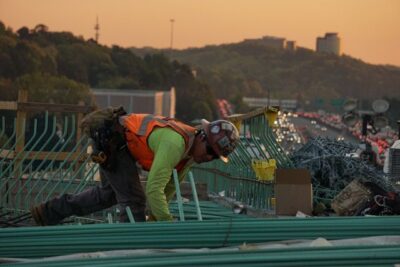There has been an infrastructural problem across the world. A good number of structures built over three decades ago have been experiencing signs of aging and need urgent repairs or replacement. They all have one common problem: they were all built using steel-reinforced steel.
The Problem with Steel
Steel is a popular material for reinforcing concrete construction. However, it tends to rust over time due to the accumulation of moisture. When steel bars rust, they expand. This expansion causes cracks in concrete, which eventually lead to break-offs. Buildings in coastal areas face a greater problem from the accumulation of salt. The buildings will age a lot faster and require repairs that are more extensive.
Steel rebar corrosion reduces the lifespan of steel-reinforced steel to about 50 to 100 years, depending on the location, before requiring extensive repairs. Inspecting rebar for signs of corrosion is quite difficult, as it is embedded in concrete. Most structural engineers notice the problem when it is too late.
The Promise of Fiberglass
Construction industry experts are looking for alternatives to steel or at least ways to deal with steel corrosion. One material that has shown promise for replacing steel in structural reinforcement is fiberglass. Fiberglass reinforcement has comparable performance and price. Let’s explore some of its advantages.
What is Fiberglass Rebar? Glass fiber reinforced polymer rebar is a composite material made from glass fibers and a polymer. This combination provides the good qualities of both materials, which are required for strengthening concrete. Here are the qualities of the matrix.
Durability
Fiberglass rebar beats steel for its resistance to corrosion. It does not rot or rust when exposed to moisture deep in the concrete. This quality ensures that it remains sturdy over an extended period. Structures built with the material do not need frequent maintenance and are estimated to last over 200 years.

Weight Difference
Fiberglass rebars are nobly lighter than steel. This lightweight material makes it easier to handle, transport, and install. Companies can move the rebars with less effort. This translates to faster project completion and reduced labor costs. The weight difference also plays a role when making high-rise buildings, where weight matters a lot.
Electromagnetic Neutrality
Glass fiber reinforced polymer rebars are electromagnetically neutral. Steel can interfere with magnetic fields, but this polymer matrix does not conduct electricity. Fiberglass rebars can be used to build structures that house sensitive electronic equipment that is located near high-voltage areas.
The Cost Difference
The cost of fiberglass reinforcement is higher than that of steel. However, savings come in when you factor in long-term savings. As explained earlier, fiberglass does not require lots of maintenance and replacements. This is a great cost-saver years down the line. Besides, transport and installation efficiency save on installation costs. At the end of the day, you spend less on fiberglass rebars than their steel counterparts do.
Fiberglass is indeed the concrete reinforcement material of the future. It offers all the advantages of steel while also offering additional benefits to counter its weaknesses. They are also more flexible and can be customized to the unique reinforcement needs of any structure.













 The 2024 virtual Men’s Round Table will be held Q4, 2024, date TBD.
The 2024 virtual Men’s Round Table will be held Q4, 2024, date TBD.













